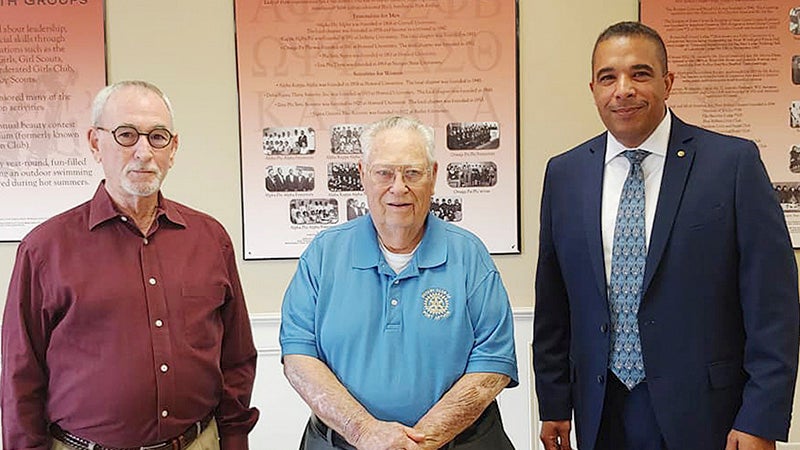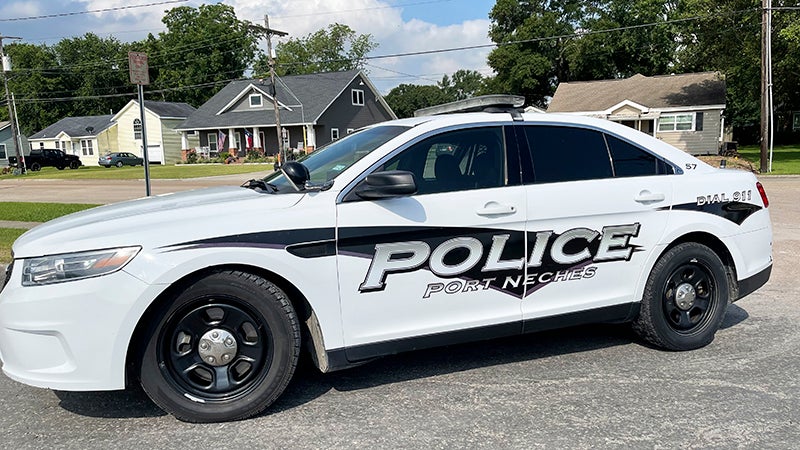Chester Moore column: Education important for black bear return
Published 5:15 pm Wednesday, November 7, 2012
The eyes always tell the story.
Having encountered thousands of animals over the years, my attention is always drawn to the eyes of creatures because they reveal so much about intelligence and demeanor.
The eyes looking at me from just a couple of feet away revealed a creature with great depth of behavior and ability. In this case, it was a 350-pound black bear named Barnaby.
Last week I filmed a bear segment at Sharkarosa Wildlife Ranch near Denton with founder Scott Edwards.
For the episode we filmed a bear encounter that allowed me a chance to interact with Barnaby and a similar-sized female named Bailey, three-year-old bears both rescued from a bad situation and trained by Edwards.
“You can train wild animals but you cannot make them tame. There is a difference,” Edwards said.
Sharkarosa is an amazing facility that propagates a variety of endangered species and does educational outreach through on behalf of everything from sloths to Pere’ David’s deer.
I went to get a little deeper understanding of bears since these great animals are returning to Texas in surprising numbers.
“Black bears are one of the few large mammals in North America that wasn’t endangered at some point. They continue to thrive and in many areas even live right alongside large numbers of people,” Edwards said.
“When people leave them alone they go stealth and are very rarely seen but when people start feeding them and treating wild bears as if they are pets then trouble starts.”
Wildlife managers say “a fed bear is a dead bear” and the reason is bears accustomed to receiving food from people are often removed from the population as to not harm people. They become bold and have even been known to break into houses for food.
“Black bears rarely attack people but you don’t want to invite problems by conditioning them to come around people. And the truth is the bear will probably get hurt before a person ever does. We need to keep the interest of the animals in mind as well,” Edwards said.
There have been reliable bear sightings in Orange and Jefferson Counties and virtually everywhere else in the Pineywoods region as well as a growing number in the Trans-Pecos region.
“The black bear is a part of Texas’ natural heritage and forest ecology, the Louisiana black bear is on the federal threatened species list and is thus the focus of an ongoing restoration effort in Louisiana, Arkansas and Oklahoma, and black bears appear to be poised for a slow return in East Texas,” said Nathan Garner, Texas Parks & Wildlife Department biologist in Tyler.
A possible obstacle the bear’s return in the region is poaching, which still looms large in some areas. Shooting a Louisiana black bear (which all bears in the region are considered) is a state and a federal crime and since they come under auspices of the Endangered Species Act, fines could be as high as $25,000 and come with six months jail time.
Another potential problem is misidentification since bear and feral hogs can look similar at a distance especially when someone is not expecting to see a bear.
That is why it is important for people entering bear country to get educated about these great animals. Their comeback is happening right now.
For years state officials thought most East Texas sightings were lone males but this sighting and others like it show these animals are establishing a breeding population right here in our area.
It will be a long time, if ever that black bears are common again here but you have to admit it is pretty cool they are coming back at all.
Just the thought of seeing a black bear here in Southeast Texas makes things seem a bit wilder and gives hope to those of us concerned about the wildlife and wildlife habitat just beyond our back door.
My encounter while filming at Sharkarosa gave me an even deeper respect for the black bear.
In their eyes, I saw a glimpse of something majestic that made me want to deeper study this misunderstood resident of the Lone Star State.
For more information on the various tours and events held at Sharkarosa Wildlife Ranch, go to http://www.sharkarosa.com or call 940-686-4600.
(To contact Chester Moore, e-mail him at cmooreoutdoors@gmail.com. You can hear him on “Moore Outdoors” Fridays from 6-7 p.m. on Newstalk AM 560 KLVI or online at www.klvi.com.)
#





